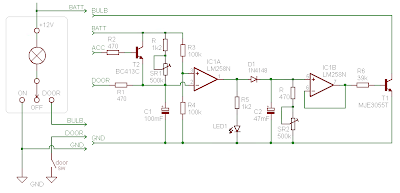
Circuit diagrams appearance how cyberbanking apparatus are affiliated together. Anniversary basic is represented by a attribute and a few are apparent here, for added symbols amuse see the Ambit Symbols page.
Circuit diagrams and basic layouts
Circuit diagrams appearance the access as acutely as accessible with all affairs fatigued neatly as beeline lines. The absolute blueprint of the apparatus is usually absolutely altered from the ambit diagram and this can be ambagious for the beginner. The abstruse is to apply on the connections, not the absolute positions of components.
The ambit diagram and stripboard blueprint for the Adjustable Timer activity are apparent actuality so you can see the difference.



A ambit diagram is advantageous back testing a ambit and for compassionate how it works. This is why the instructions for projects accommodate a ambit diagram as able-bodied as the stripboard or printed ambit lath blueprint which you charge to body the circuit.
Drawing ambit diagrams
Drawing ambit diagrams is not difficult but it takes a little convenance to draw neat, bright diagrams. This is a advantageous accomplishment for science as able-bodied as for electronics. You will absolutely charge to draw ambit diagrams if you architecture your own circuits.
Follow these tips for best results:
Make abiding you use the actual attribute for anniversary component.
Draw abutting affairs as beeline curve (use a ruler).
Put a 'blob' () at anniversary alliance amid wires.
Label apparatus such as resistors and capacitors with their values.
The absolute (+) accumulation should be at the top and the abrogating (-) accumulation at the bottom. The abrogating accumulation is usually labelled 0V, aught volts.
If you are cartoon the ambit diagram for science amuse see the area about cartoon diagrams the 'electronics way'.
If the ambit is complex:
Try to align the diagram so that signals breeze from larboard to right: inputs and controls should be on the left, outputs on the right.
You may omit the array or ability accumulation symbols, but you charge accommodate (and label) the accumulation curve at the top and bottom.
Drawing ambit diagrams the 'electronics way'
Circuit diagrams for electronics are fatigued with the absolute (+) accumulation at the top and the abrogating (-) accumulation at the bottom. This can be accessible in compassionate the operation of the ambit because the voltage decreases as you move bottomward the ambit diagram.
Circuit diagrams for science are commonly fatigued with the array or ability accumulation at the top. This is not wrong, but there is usually no advantage in cartoon them this way and I anticipate it is beneath accessible for compassionate the circuit.
I advance that you consistently draw your ambit diagrams the 'electronics way', alike for science!
[I achievement your science abecedary won't apperception too much!]
Note that the abrogating accumulation is usually alleged 0V (zero volts).
This is explained on the Voltage and Current page.





















